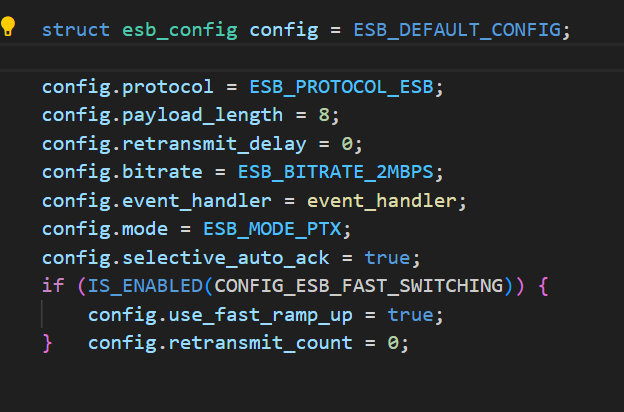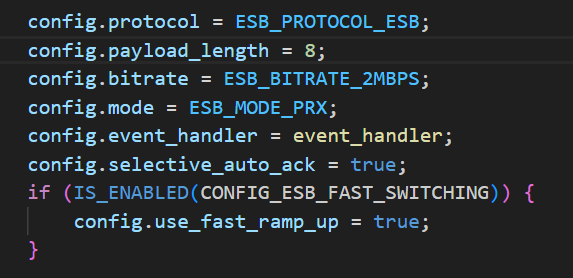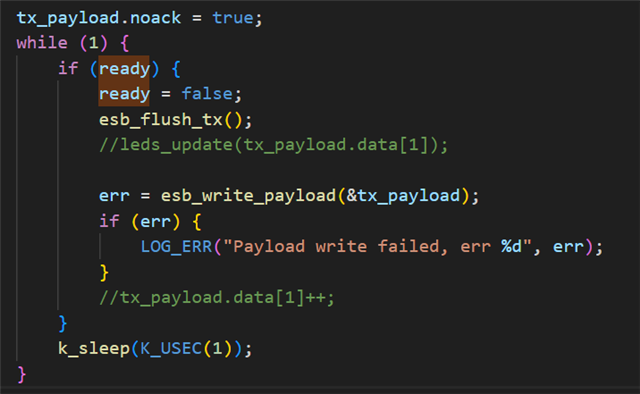Hi all,
I have an application that is pretty simple. One master that needs to stream small payloads (sub 32 byte) to a receiving device. The payload is a fixed size and all I care about is achieving the maximum polling rate/update rate possible. I do not even care about the client acknowledging data or attempting to retry and transmission. Just send the most current data as fast as possible (I think of a UDP stream in a away).
I started with standard BLE but realized that if I need maximum update rates possible, I needed to turn to proprietary protocols. I am now looking at ESB and Gazelle.
In order to avoid having to implement and tweak both protocols, I was wondering if someone would know beforehand what protocol is built best for my needs. ESB seems attractive as you can turn off ACK packets from the client and turn off re-transmissions. It seems like you would get a decent gain in packets per second that you could send eliminating this overhead.
Gazelle seems like it does not give you some of that flexibility (maybe it does and I didnt find it) like turning off ACK responses. However I saw with 2 NRF52840 devices, the Gazelle time slot can be reduced to 600us. So maybe it can still hold its own against ESB.
Is there any benchmarking or experience you may have to know which protocol is best suited towards the type of application I described. My gut tells me ESB, but I would appreciate any insight.
Thanks





